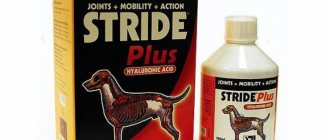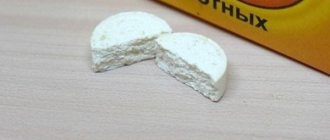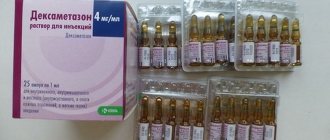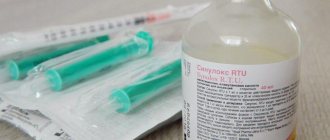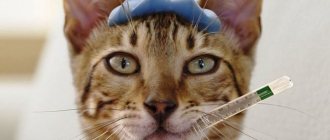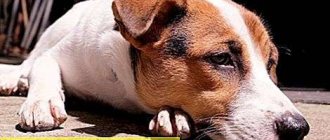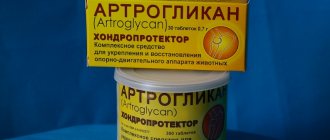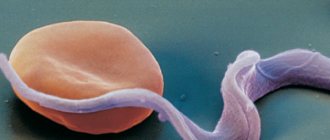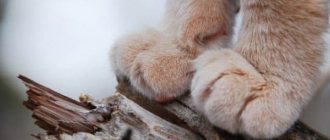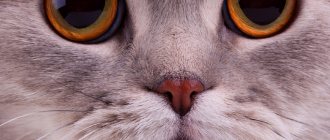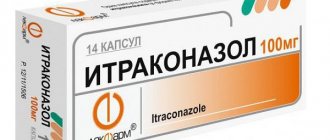What is joint dysplasia
Each joint is formed by the articular surface of the rounded ends of the bones, surrounded by an articular capsule. Inside there is an articular cavity filled with synovial fluid. Normally, all components of the joint correspond to each other and are firmly held by ligaments.
With dysplasia, due to developmental deficiency, the mobility of bones inside the joint increases, a pathological gap is formed between them, as a result of which the joint cannot fully function.
Main varieties
Of the main types of dysplasia, pathology of the hip joints is the most common.
In second place is the improper development of the elbow and shoulder joints, but disorders in the knee joints are rarely recorded and are acquired in nature.
Hip dysplasia
This pathology of the hip joint involves damage to the head of the femur and the structure of the acetabulum, resulting in their mismatch. At the first stage of the disease, joint laxity and minor bone deformities develop.
The second stage is characterized by the appearance of erosions of the articular surfaces and symptoms of arthritis. In the third stage, the femoral head undergoes significant deformation and flattening, and the acetabulum becomes shallow and almost flat.
Elbow and shoulder joint
If the elbow and shoulder joints develop incorrectly, there is also a mismatch between the articular surfaces of the anatomical structures. The heads of the bones gradually become covered with microscopic cracks, the cartilage loses its elasticity, softens or splits into separate areas characterized by varying degrees of mineralization.
Hind limbs
In addition to the hip joints, knee dysplasia may be observed in the hind legs. In cats, it occurs in isolated cases and is a consequence of injury or excessive stress.
Congenital and acquired dysplasia
Cats have congenital and acquired joint dysplasia. The largest percentage of cases is a congenital anomaly that occurs during embryonic development. But at present, scientists cannot identify a specific gene responsible for the development of dysplasia. They believe that this defect is formed under the influence of a specific set of chromosomes or a certain sequence of their connection.
According to another hypothesis, dysplasia is provoked by the synthesis of an insufficient amount of hyaluronic acid, which is part of the synovial fluid. This indicator is laid down at the genetic level, and it is impossible to influence it by external factors.
Acquired dysplasia can be caused by:
- intensive growth of kittens;
- an unbalanced diet, when the body receives an excess amount of phosphorus with a lack of calcium;
- birth injuries.
Note! The most intensive growth in the first months of life is observed in cats of the Asher breed. And although the debate about the recognition of this breed still does not subside, when choosing a pet, owners need to approach the assessment of its constitutional characteristics “with passion”, and also very carefully select the diet.
Predisposing factors and breeds of cats prone to joint dysplasia
Veterinarians recognize the hereditary-genetic cause of dysplasia as the main one.
At the same time, they identify provoking factors that contribute to the development of this disease, but in the presence of a predisposition to it:
- sterilization of cats and castration of cats at an early age (at 2-4 months), leading to a later cessation of bone growth;
- obesity, which puts a lot of stress on the joints;
- musculoskeletal injuries, falls from heights;
- lack of physical activity;
- lack of calcium as a result of an unbalanced diet;
- feeding only dry food or meat in large quantities;
- rapid growth with large animal sizes;
- intrauterine developmental delay of joints;
- hormonal disorders;
- deformed (flat) chest;
- belonging to a certain breed.
Dysplasia can develop in a cat that is obese.
The possibility that these factors actually increase the risk of developing dysplasia is partially supported by research. But in any case, this occurs against the background of a hereditary predisposition.
The following breeds are most susceptible to hip and elbow dysplasia:
- Maine Coon;
- British;
- Scottish Fold (Scottish Fold);
- Persian;
- Siamese;
- Norwegian forest;
- Devon Rex;
- Abyssinian (the so-called subluxation of the patella is noted);
- Burmese;
- chartreuse;
- exotic shorthair.
Practicing veterinarians note that this disease is typical for purebred cats, less often for mixed breeds. Maine Coons are primarily at risk : according to the Orthopedic Foundation for Animals (OFA), the incidence rate among them reaches 18-24%. Second and third places belong to the British and Scottish folds. A survey of the most famous 12 cat breeds showed that the average incidence of joint dysplasia is 6.6%.
Outbred cats can also develop lesions of the hip joint, but most often they are almost asymptomatic. In this regard, owners do not go to veterinary clinics.
Causes of dysplasia in cats
Owners should understand that genetic predisposition to the disease is not a death sentence. Thanks to proper feeding and maintenance, the degree of development of pathology can be minimized. Therefore, you need to know the reasons for the development of dysplasia in cats in order to avoid mistakes in care.
- Obesity. Excess weight significantly increases the load on the animal's osteoarticular apparatus, leading to its deformation. In addition, an obese pet leads a sedentary lifestyle, as a result of which the muscles and ligaments weaken and no longer fully support the skeleton. Therefore, any sudden movement or physical activity can provoke pathological changes in the joint, leading to dysplasia.
- Injuries. After bone fractures, joint dislocations, sprains (ruptures) of ligaments, muscles or tendons, a natural redistribution of weight occurs, during which the load on healthy limbs increases, and, as a result, the risk of developing joint dysplasia increases. If during an injury the joint capsule was damaged and synovial fluid leaked out, then irreversible changes will certainly occur in the joint, leading to dysplasia.
- Low level of physical activity. Even pets with normal weight should have a well-developed muscular corset that holds the articular surfaces of the bones at a certain distance from each other. With low muscle tone, compression of articular cartilage and menisci occurs, protrusions, hernias and dysplasia occur.
- Early sterilization. The optimal age for sterilization of cats is considered to be from seven months to two years. Removing the gonads too early leads to changes in overall hormonal levels, slower bone growth and the deposition of subcutaneous fat.
- Rickets. Insufficient intake of calcium and vitamin D during the period of intensive growth and intrauterine development of kittens leads to the development of rickets. It manifests itself as curvature of the spine, deformation of the limbs and chest.
Note! Vitamin D is not synthesized in the skin of cats under the influence of sunlight, as it happens in humans. Therefore, it makes no sense to “replenish” your pet’s reserves of this vitamin by walking in the fresh air.
- Hormonal disorders. Impaired bone mineralization occurs when the thyroid gland malfunctions, since it is responsible for the rate of bone tissue regeneration. Dysplasia can also form due to insufficient production of growth hormone synthesized by the pituitary gland.
- Poor nutrition. Even though cats are carnivores, their diet should include grains, vegetables and fruits. Feeding only meat and meat products does not provide the pet with all the necessary microelements and vitamins, and the lack of fiber negatively affects the functioning of the gastrointestinal tract, the absorption of nutrients and the development of beneficial microflora. It is also worth noting that ready-made economy and premium food do not provide animals with the necessary substances for growth and development, which also leads to osteoporosis and dysplasia.
Treatment of the disease
Depending on the stage of joint damage, different treatment methods are used. Mild stages of dysplasia (A, B and C) are diagnosed with great difficulty, since they do not cause much concern to the animal. But if you catch the disease at these stages, treatment will be more successful. There is a high probability that it will be possible to do without surgery.
Therapeutic diet
The basis of the therapeutic diet is the restriction of high-calorie foods and a sufficient amount of vitamins and microelements. The diet should contain dietary foods rich in glucosamine and chondroitin (gelatin, cartilage). Of the microelements, calcium and manganese are especially important. It is very important to monitor the animal's weight. Under no circumstances should the established standards be exceeded.
Drug therapy
The basis of drug therapy in the early stages of the disease is long-term use of chondroprotectors (Artroglycan, ArthroVet, Stride Plus). The homeopathic remedy Chondartron is also used in the form of subcutaneous injections.
If necessary, intra-articular injections of hyaluronic acid and absorbable drugs are prescribed to ease the functioning of diseased joints and relieve inflammation.
Physiotherapeutic procedures
They can be used only during the period of remission, so as not to provoke a worsening of the condition. These are procedures that relieve pain and inflammation - ultrasound, laser therapy, electrophoresis, massage.
Rehabilitation
The sore paw is firmly fixed. They temporarily limit the animal’s ability to move, depriving it of the ability to actively move, go outside, or jump. Rest promotes rapid recovery in non-advanced forms of dysplasia.
Surgery
Advanced stages of the disease (D and E) require surgical intervention. There are several types of operations for joint dysplasia. They differ in complexity and cost:
- Pectinectomy is an operation that corrects the adductor muscle of the thigh, which is deformed and becomes involved in the pathological process. This operation gives good results in kittens under six months of age.
- Triple pelvic osteotomy. The operation is performed on young animals whose bones and ligaments have sufficient elasticity and strength. Three osteotomies (artificial fractures) of the pelvic bones are performed, after which the acetabulum is rotated and fixed with a special plate so that the joint takes the correct position.
- Joint endoprosthetics. It is practiced in cats that have reached 10 months of age and have severe dysplasia. It is the replacement of a diseased joint with an artificial one (metal or ceramic). The most effective method. The downside is its high cost.
- Intertrochanteric osteotomy. Used to treat traumatic subluxations in cats and dogs. The doctor changes the angle of entry of the femur into the glenoid cavity and reduces the subluxation. This reduces the gap between the body and the neck of the bone.
- Resection of the head of the bone or resection arthroplasty. The operation is aimed at forming a false joint in the place where the head of the bone was. The connective tissue that fills the free space begins to act as a ligamentous apparatus.
Symptoms and first signs of dysplasia in cats
Characteristic symptoms and the first signs of dysplasia in cats begin to appear during a period of intensive growth. Abnormalities of the elbow joints become noticeable only from the age of six months.
The degree of their manifestation depends on the stage of development of the pathology. The first warning signs are:
- tension and unnatural gait;
- lameness after sleep, and in severe cases - constantly;
- curvature of limbs;
- muscle atrophy and enlargement of limb joints;
- inactivity;
- a crunch made by joint surfaces rubbing against each other during movement.
Young kittens may meow frequently in pain while moving. They try not to make sudden movements and jumps. Adult animals cannot bend their hind legs under themselves when sitting and hide them under their stomach while lying on a horizontal surface.
Signs
The first signs of dysplasia may begin to appear at an early age. At the very beginning, a young cat may have impaired movement, and this condition only intensifies after physical activity.
Later, as the disease progresses, lameness may develop. The animal becomes inactive due to the pain it experiences; it prefers to lie or sit almost all the time and tries to avoid physical activity.
Over time, the joints affected by the disease enlarge, and during flexion or extension movements, their crunching may even be heard.
Important!
If an animal has only one joint affected, then the muscles on that hind limb may atrophy.
Breed predispositions
It is worth noting, first of all, such large cats as the Maine Coon. 18% of this breed suffer from dysplasia.
The following are:
- British;
- Scottish fold;
- Siamese;
- Persian;
- Norwegian forest
How is the treatment carried out?
Diet food
Cats will need to be given food that contains glucosamine and chondroitin. These useful components are found in cartilage and red fish. If owners prefer to feed animals with food sold in stores, veterinarians recommend purchasing dietary supplements. One of the most popular manufacturers is Royal Canin. In addition, it is important to include supplements in the diet, for example, Hyalutidine. The duration of use is determined by the doctor, taking into account the stage of the pathology.
Beetroot contains a large amount of manganese.
It is important to add microelements to the animal menu. One of the most useful is manganese. It is found in green buckwheat, beets and oat seeds. If your cat is overweight, you will need to reduce the calorie intake. When dysplasia occurs in a mild stage, this is enough to stop the course of the pathology and allow the animal to move normally again.
Drug therapy
Treatment necessarily involves prescribing chondroprotectors to the cat. They allow you to improve the animal’s motor activity, relieve pain and inflammation. Veterinarians often prescribe Artroglycan and Stride-plus. It is important not to forget that medications from this group are effective only with long-term use. In addition, they are prescribed exclusively at the initial stage of the development of the disease; in case of serious joint deformation, they do not work.
An auxiliary element of treatment is “Chondartron”, which is a homeopathic medicine. It is prescribed as a subcutaneous or intramuscular injection. With the help of this medicine it is possible to relieve pain and inflammation. If the disease is diagnosed in an advanced stage and the animal experiences severe pain during movement, the pathology will need to be treated with the Loxicom suspension. This medicine belongs to the group of non-steroidal anti-inflammatory drugs and has a powerful effect. However, it is permissible to use it for no more than 14 days under the close supervision of a veterinarian, since the medication can cause serious adverse reactions.
Physiotherapeutic procedures
Massage treatments will improve blood circulation in problem areas in your cat.
Treating joint dysplasia in cats with physiotherapy begins at the initial stage of development of the pathology or during remission. It is also possible to carry out the procedure after surgery. In such a situation, ultrasound is often prescribed, with the help of which it is possible to speed up the healing process of bone tissue and stop inflammatory processes. Electrical stimulation is used to eliminate pain. Laser therapy may also be prescribed, which improves collagen production in cartilage. Massage procedures will help normalize blood flow and deliver oxygen to tissues.
Surgical intervention
Surgery is performed exclusively in situations where conservative treatment does not bring the required therapeutic effect. However, surgical intervention is not performed in all veterinary clinics. During surgery, resection of the head of the bone can be performed when the articulation is completely destroyed. Correction of the muscle tissue of the thighs, osteotomy of the ulna and hip bones are also performed. Often they resort to installing an artificial prosthesis on the affected joint. Arthroscopy can also be performed, during which the surgeon removes the destroyed areas of the bone.
Tests and methods for diagnosing dysplasia
It is impossible to make an accurate diagnosis and begin proper treatment using clinical signs alone at home. Therefore, you should take the animal to the clinic, where tests will be prescribed.
- Collection of anamnestic data. During the survey, the specialist examines the pedigree (if any), finds out the presence of the disease in the parents and other kittens from the litter, the characteristics of pregnancy and childbirth, the presence of birth injuries, and the time of the first signs.
- Clinical examination. It includes examination of the limbs and spinal column, palpation, determination of the presence and degree of bone deformation.
- Laboratory analysis of blood and urine. An increased number of leukocytes indicates the development of inflammation in the body and the presence of associated pathologies.
- Study of the functioning of the cardiovascular system. Since general anesthesia is required for radiography, before administering it the doctor must make sure that the animal does not suffer from heart disease.
- Arthroscopy. During this procedure, a specialist can assess the condition of the inner surface of the joint using an arthroscope inserted into it through a pinhole puncture.
Note! To conduct this examination, you need expensive equipment, appropriate qualifications and experience of specialists. Therefore, not every clinic can afford such a “luxury”. In addition, the high cost of the study does not make it possible to make it widespread and publicly available.
The final diagnosis is made based on radiography of the joint.
Risk factors
Hip dysplasia in a cat is caused by a number of possible reasons. The most significant factor is considered to be excess body weight. As a result, joint pathology is more often diagnosed in Maine Coons. However, there are other breeds that are more susceptible to dysplasia:
- British;
- Persian;
- exotics;
- Siamese.
The following risk factors are also identified:
Pathology can develop in an animal that eats only dry food.
- pathology of bone tissue;
- complications after suffering traumatic injuries;
- excess high-calorie foods on the menu;
- low physical activity;
- lack of calcium in the body;
- feeding exclusively with ready-made dry complementary foods;
- hormonal imbalance.
Test for dysplasia in cats
In 1983, scientists proposed a test for dysplasia called PennHIP. After completion in 1993, it became widespread, as it allows, with certain equipment, to recognize pathology at the earliest stages of development.
After general anesthesia and muscle relaxants that relax the skeletal muscles are administered, the cat is fixed on a special device in a stretched state. This makes it possible to move the femoral head away from the acetabulum to the maximum distance.
The doctor then takes several x-rays and calculates the DI displacement index by comparing the data obtained with the breed standard.
- A DI value of “0” indicates a severe degree of dysplasia and the presence of degenerative processes.
- DI=1 indicates low joint mobility.
- With an average degree of pathology, this coefficient is 0.5-0.6.
X-ray of the joint
The main method for diagnosing dysplasia today remains x-ray of the joint. It allows you to accurately assess the degree of tissue damage and bone condition.
The disadvantages of this survey are:
- age restrictions (the pet must be 2 years old at the time of the procedure);
- the need to administer general anesthesia to ensure complete immobility.
Note! If a cat suffers from heart pathologies and at the same time has a calm disposition, then radiography can be performed without anesthesia, but with careful fixation.
Symptoms (photo)
Symptoms of hip dysplasia may include:
- Clumsiness.
- Unsteady gait.
- When performing jumps, a cat gallops like a hare.
- Lameness, especially noticeable after the animal runs or jumps.
- Clearly audible crunching sound when moving.
- The cat doesn’t like to jump on tops; he prefers not to even climb onto a chair or sofa.
- When the cat stands up, the stiffness of her movements is visible.
- X-shaped stance of the hind limbs and muscle atrophy.
How strongly the signs of dysplasia will manifest depends on its degree. There are five of them in total:
- Healthy joint: everything is fine, dysplasia is completely absent
- Minor changes, noticeable only on x-ray.
- Mild pathological changes: at this stage, clinical manifestations of the disease are possible.
- Severe: serious changes can be seen on x-rays, and pronounced clinical symptoms are also present.
- Extremely severe degree: complete destruction of the joint and its dislocation occurs.
Important!
If dysplasia first manifests itself at an early age, then the listed symptoms will be less obvious than if the disease first appeared in the pet’s adulthood.
The degrees of dysplasia are of particular importance for mating tolerances. According to the rules of the World Cat Federation, animals with the first three degrees are allowed for breeding, while when choosing a partner for your pet, preference, of course, should be given to completely healthy producers.
Consequences of the disease
Conservative methods cannot completely restore the integrity of the joint and ensure its full functioning. Therefore, the consequences of the disease are:
- joint deformation;
- degeneration of bone and cartilage tissue;
- secondary osteoarthritis;
- hip subluxation;
- hip dislocation;
- pelvic deformity;
- arthritis;
- complete loss of joint mobility.
As a result of these complications, cats become very difficult to move and experience increased pain.
General information about the disease
Joint dysplasia is a congenital defect that arises as a result of improper formation in the embryonic and postnatal period. It consists of a discrepancy between the head of the hip or ulna and the glenoid cavity. As a result, a pathological gap is formed between them, which is why the joint cannot work effectively.
There are two types of dysplasia in cats:
- Hip dysplasia. It occurs most often and represents a pathology of the hind limbs of the animal.
- Elbow dysplasia is less common. It represents mainly pathologies of the proximal processes of the ulna.
Hip dysplasia (HJD)
The hip joint is formed by the head of the femur, the acetabulum (the depression formed by the hip bones) and the acetabulum (a special cartilaginous plate). The ligamentous apparatus that holds the femoral head in the socket consists of the articular capsule, round ligament and acetabular labrum.
The pathology consists of underdevelopment of the joint, the degree of which can vary from increased mobility with a deficiency of connective tissue and weakness of the ligamentous apparatus to gross disorders. Lack of adequate treatment can lead to severe complications, which are characterized by dysfunction of the hind or forelimbs, up to complete loss of mobility.
Complications may be of the following nature:
- Subluxation of the hip. The femoral head cannot be held in its proper place by the ligamentous apparatus. It moves outward and upward. Its partial displacement relative to the acetabulum is called traumatic subluxation.
- Hip dislocation. Complete loss of contact between the femoral head and the acetabulum, in which the latter folds into the joint. Over time, the acetabulum can fill with connective tissue, causing the dislocation to become irreducible.
- Arthrosis of the hip joint. It occurs when improper articulation leads to constant contact between the femur and acetabulum and their mutual injury. The bone is gradually destroyed, the cartilage loses its elasticity.
- Pelvic deformity. It occurs with bilateral dysplasia. When both joints are affected, over time one limb becomes deformed relative to the other.
Permission to breeding
Due to the fact that dysplasia of the hip and elbow joints in cats is of a hereditary nature, it became necessary to control the possibility of breeding animals. To determine it, a special rating scale is used.
According to this scale, there are five degrees of dysplasia:
- Grade “A” indicates healthy joints without signs of deformation.
- Grade “B” is assigned when there are minor changes without significant clinical manifestations.
- Grade “C” is given to animals with the initial stage of the disease and mild clinical manifestations.
- Grade “D” is reserved for animals suffering from severe joint deformities.
- Grade “E” means that irreversible changes have occurred in the joints, as a result of which the animal has become disabled.
Animals with stages A, B, and C are allowed for mating. An expert assessment is carried out with the participation of representatives of the Orthopedic Animal Foundation when the animal reaches the age of 1.5 years.
Prevention measures
The main measures to prevent dysplasia are:
- culling and sterilization of kittens with a genetic predisposition to the disease;
- feeding pets with high-quality food, balanced in the content of nutrients, vitamins, calcium, phosphorus and other minerals;
- preventing obesity;
- regular examination by an orthopedist.
The cat should have a soft bed. It should be placed in a warm place where there are no drafts, which can provoke inflammatory processes in the joints.
Let's sum it up
Dysplasia in cats is a dangerous disease that requires a quick response. The sooner you go to the vet, the greater the chance that the consequences for your pet's health will be minimal. It should also be remembered that the pain that a pet experiences in the later stages of the disease is really severe, so a quick response will also help reduce its suffering. Be attentive to your pet, and he will answer you with love and gratitude.
A disease such as dysplasia requires close attention and human assistance.
